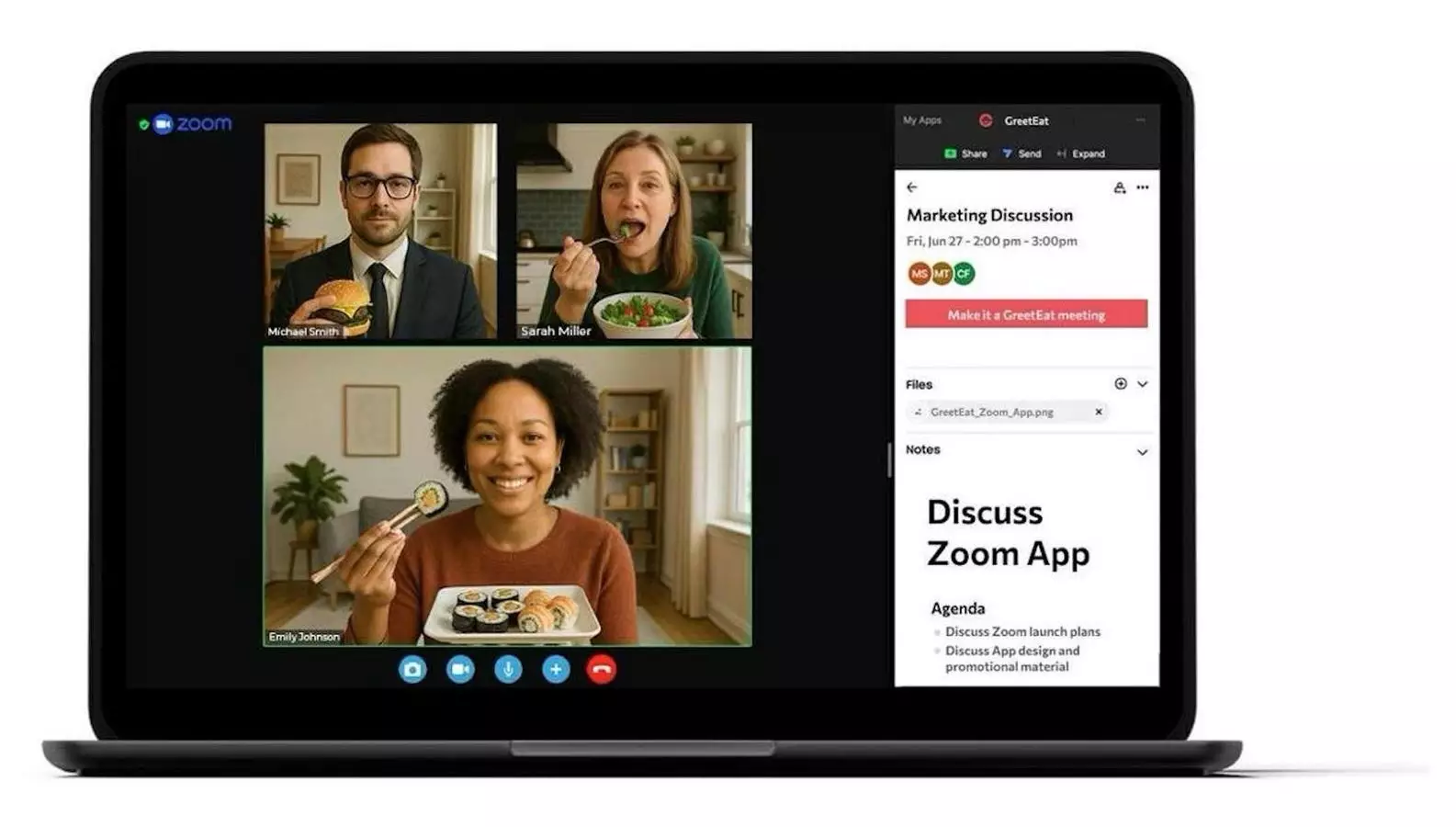In the shifting landscape of modern workplaces, the essence of human connection often feels lost amid the echoes of virtual meetings and digital only interactions. During the peak of the pandemic, Vishal Patel observed a subtle yet profound erosion of workplace camaraderie. While meetings continued to occur at an increased frequency, the casual, spontaneous interactions—those unstructured moments of shared meals, coffee breaks, and informal chats—faded into the background. It became apparent that the natural social bond fostered through shared food was missing in action. Those brief moments of connection, which once served as social glue, had been replaced by sterile video calls, leaving employees feeling isolated and disconnected.
Recognizing this void, Patel saw an opportunity rooted in a simple, human desire: to share a meal. His background in tech, communications, and logistics fueled his conviction that technology could bridge the social gap created by remote work. The result was GreetEat, a platform designed to reincorporate the communal experience of dining into the virtual workspace. By integrating meal delivery with virtual meetings, Patel envisioned a new way to nurture relationships, build trust, and foster culture regardless of physical distance.
Bridging the Gap Between Virtual and Personal Connections
Historically, corporate culture has been deeply intertwined with physical proximity—think catered team lunches, coffee break chats, or spontaneous conversations around the water cooler. These moments are not merely about sustenance; they are about building rapport, exchanging ideas informally, and cultivating a sense of belonging. The transition to remote work has disrupted this dynamic, leaving employees to navigate a digital realm that lacks the tactile and emotional cues of in-person interactions.
Research from Harvard Business Review and other academic sources underscores this difficulty. Virtual meetings often feel impersonal; trust and rapport are harder to establish without shared experiences. Patel’s insight to use food—a universal social facilitator—as a tool to counteract this disconnection is both intuitive and innovative. His platform, GreetEat, seamlessly combines the scheduling of virtual meetings with on-demand meals delivered through Uber Eats. Participants are sent meal credits, pick their food from local restaurants, and join the meeting to eat together, virtually breaking down the barriers of physical separation.
This approach transcends the superficial. It reintroduces a layer of human intimacy and vulnerability that most remote meetings lack. The act of sharing a meal creates a relaxed environment conducive to genuine conversation and camaraderie, strengthening team bonds and fostering a sense of community in a remote setting.
Solving Logistical Challenges to Foster Genuine Connection
One of the most significant hurdles in reviving shared meals in remote work has been logistics. Coordinating food orders, managing expenses, and dealing with reimbursements are complex and time-consuming. Previous attempts—meal stipends, virtual happy hours, or sporadic cooking classes—often fell short due to these logistical inefficiencies. They lacked a centralized, streamlined process that integrated smoothly into existing workflows.
GreetEat addresses this challenge head-on by providing a unified platform. Companies can attach meal vouchers directly to virtual meetings; employees select their preferred dishes, and Uber Eats handles real-time delivery within a reliable network. This end-to-end process—from scheduling to payment reconciliation—is designed to eliminate friction, making shared virtual dining a straightforward, scalable activity.
The platform’s integration with HR systems and payment processors further reduces administrative burdens. Companies no longer have to worry about reimbursements or receipts, as everything is managed digitally. This efficiency makes it not just feasible but attractive as a regular feature of remote work culture, akin to other productivity tools and wellness programs.
Transforming Workplace Culture and Employee Engagement
The potential impact of GreetEat extends beyond convenience; it targets core issues of engagement and retention. As remote work becomes increasingly entrenched, companies are seeking innovative ways to maintain culture and motivate their workforce. Offering a shared dining experience can cultivate a sense of belonging, boost morale, and even improve productivity.
Data suggests that employees feel more valued and perform better when provided with perks that foster community. A report from ezCater highlights that over half of employees believe free food enhances their productivity and work quality. Moreover, nearly one-third of workers neglect to take proper breaks, risking burnout. GreetEat’s virtual meals stand to counteract these tendencies, encouraging employees to step away from their desks and connect meaningfully.
Additionally, the platform’s versatility allows it to serve various corporate needs beyond the typical team lunch. It can facilitate onboarding, create a more engaging client pitch, or even serve as a reward mechanism during long gaming or e-sports tournaments. By embedding the act of sharing a meal into different contexts, companies can creatively leverage this tool to reinforce their values and culture.
The Future of Workplace Connection Is Digital, But Human-Centered
Vishal Patel’s innovation underscores a broader truth: in an era of digital work, the human element remains irreplaceable. While technology can facilitate communication at scale, it often lacks the warmth and immediacy that shared experiences provide. By reintroducing meals into virtual interactions, GreetEat exemplifies how thoughtful innovation can humanize remote work.
The future of work isn’t about replacing in-person interactions entirely but enhancing them with tools that foster authentic relationships. Shared meals—whether physical or virtual—continue to be powerful icons of community, tradition, and trust. Platforms like GreetEat challenge the notion that remote work equates to social disconnection, demonstrating that with the right approach, technology can serve as a catalyst for genuine human connection.
Patel’s vision reminds us that at its core, work is a social endeavor. It thrives not just on tasks and productivity but on the relationships and shared moments that motivate, energize, and retain employees. Embracing this perspective could be the key to transforming remote work from a series of isolated screens into a vibrant, interconnected community.


Leave a Reply